|
PREVIOUS |
HOME |
NEXT |
| |
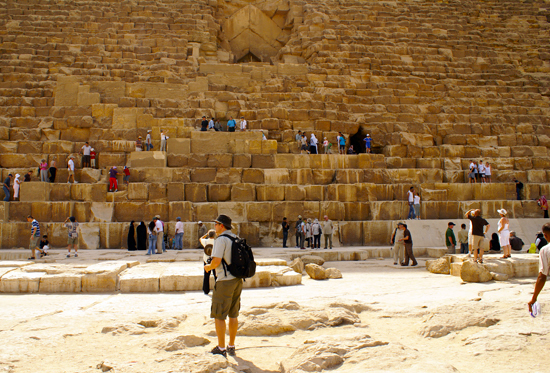
|
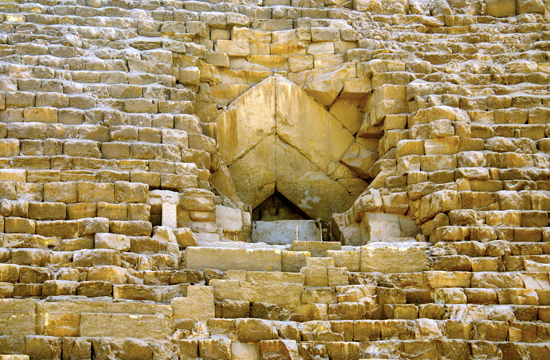 |
|
Nearly 5,000 years ago Giza became the royal necropolis for Memphis,
capital of Egypt. In less than 100 years the ancient Egyptians built
the three pyramid complexes to serve as the tombs for their dead kings.
After the king's death, his body was brought by boat to the valley temple
for preparation before being taken up the causeway and buried under, and
in some cases within, the pyramid. The mortuary temples were
maintained for many years afterwards with priests making daily offerings
to the dead god-king. The king's close family and the royal court
were buried in satellite pyramids and some tombs called mastaba
nearby, seeking to share in the king's power in death as they had in life. |
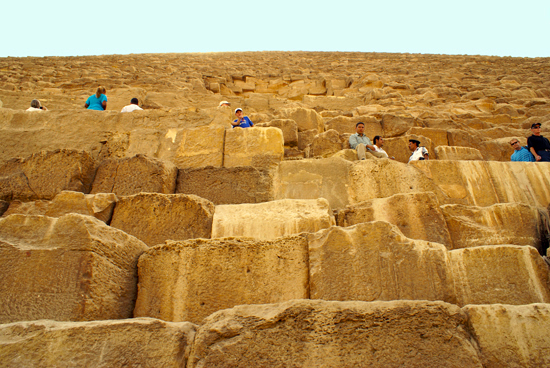
|
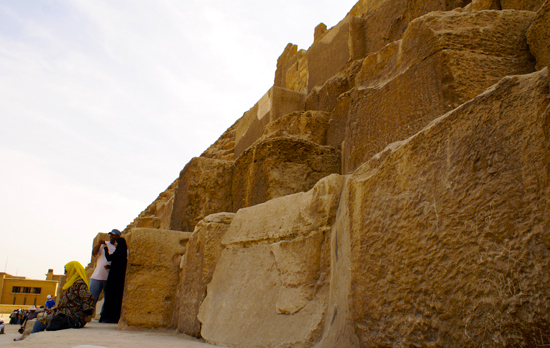
|
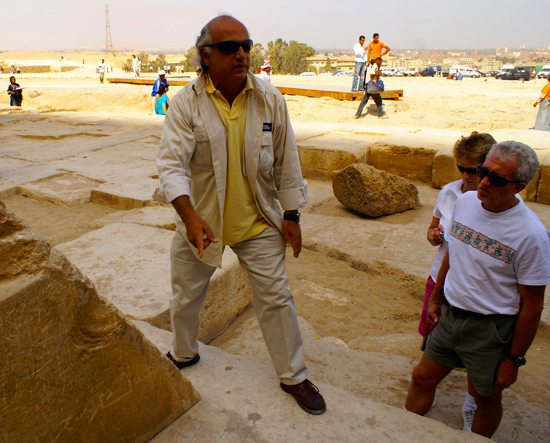
Here our National Geographic Expeditions tour guide, Aki, explains
to us some of the construction techniques used to build these immense
structures. |
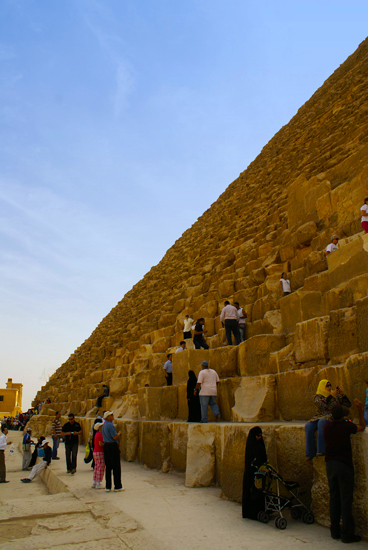
|
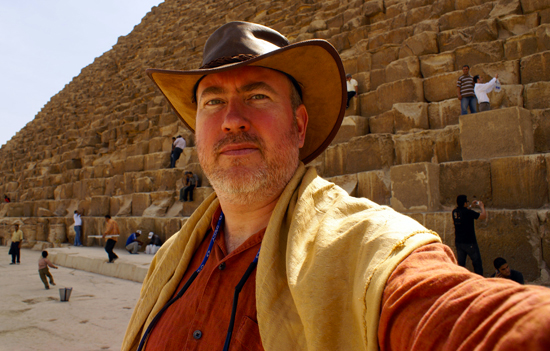 |
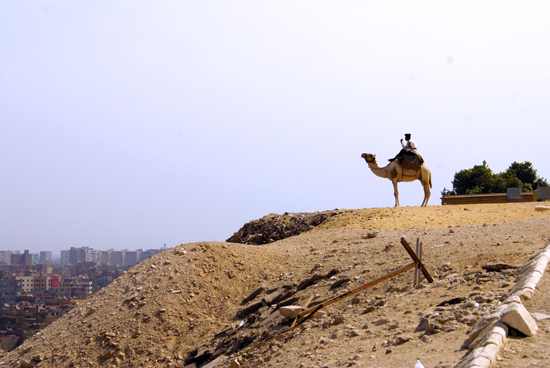
The tourism police ride around the sight on camels. If they
see you taking their picture they (like most of the tourist workers) will
try and demand money so I took this one surreptitiously.
|
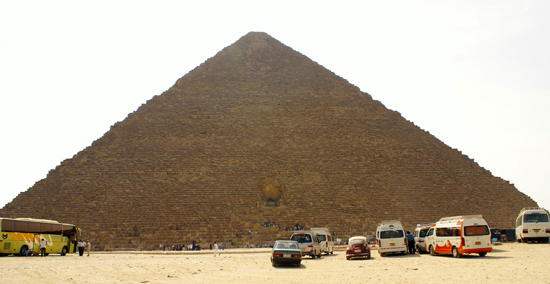 |
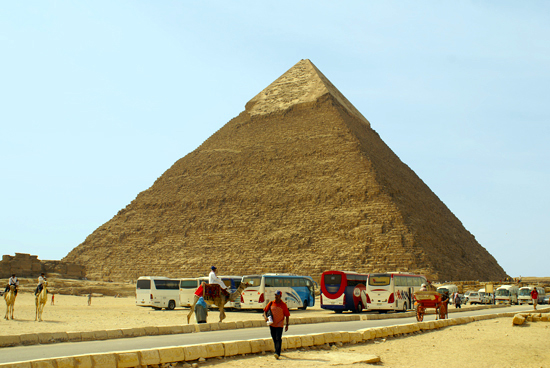
|
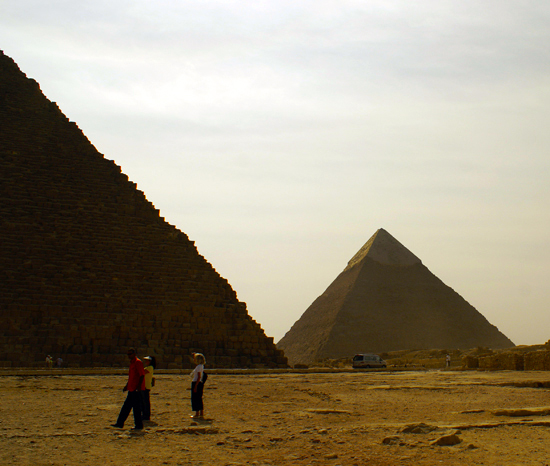 |
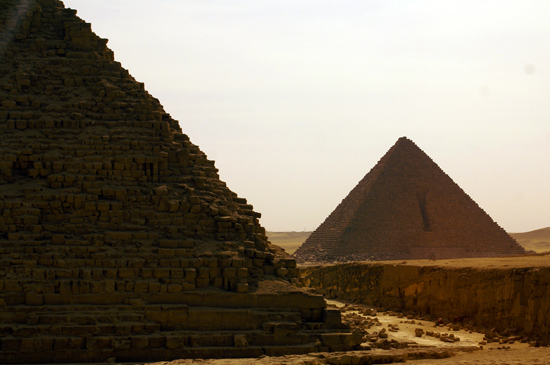
|
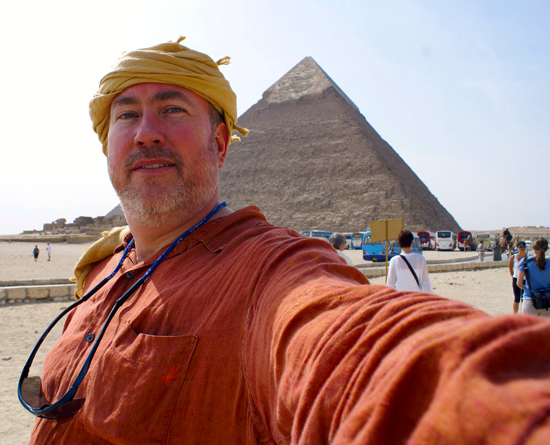 |
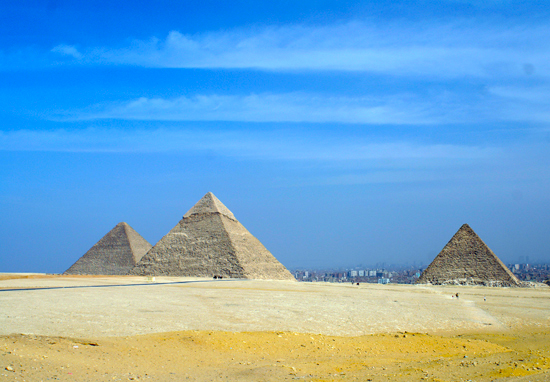 |
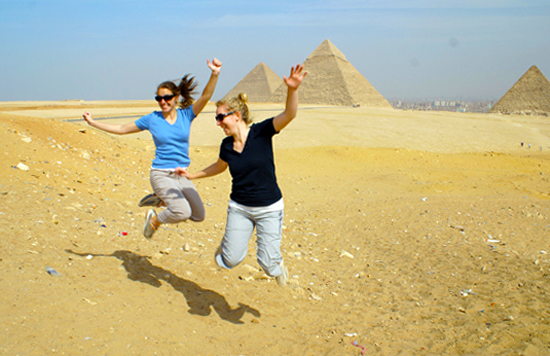 |
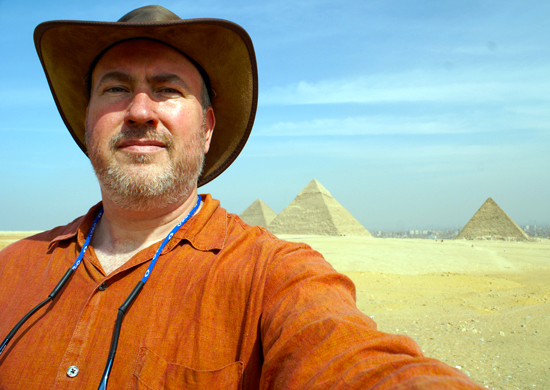 |
|
Although some chose to give it a try, I decided to pass on the camel
rides. |
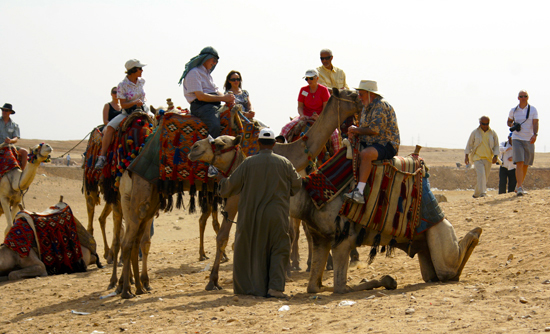
|
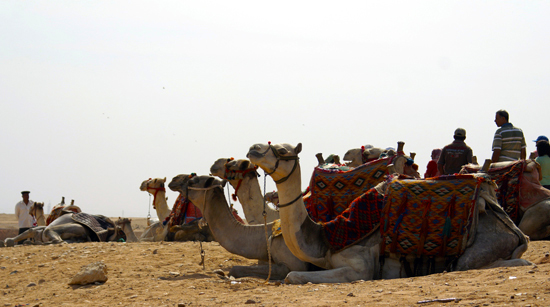 |
The Sphinx was built as the guardian of the Giza Plateau. The
leontine Sphinx is known to the Arabs as Abu al-Hol, the "father of
terror." The Sphinx is the earliest known monumental sculpture of
ancient Egypt. Archaeologists date it to around 2500 BC, crediting
Khafre as the inspiration. It stands 20 m high with an elongated
body, outstretched paws and a royal headdress framing a fleshy face,
possibly that of the king himself. It is carved from an outcrop of
natural rock augmented by shaped blocks around the base, added during
repeated renovation from the 18th Dynasty onwards.
Although it is
often written that the Sphinx's nose was shot off by the Mamluks, Ottomans
or Napoleon's French army, it was in fact lost some time before the 15th
century. Originally the Sphinx also had a stylized false beard,
symbol of royalty, but that too fell off. A piece taken from where
it lay on the sand is now held by the British Museum in London, along with
the Rosetta Stone (which I did see on my first trip to London last year).
Both of these items are high on the list of things that the Egyptians
would like to have returned.
|

|
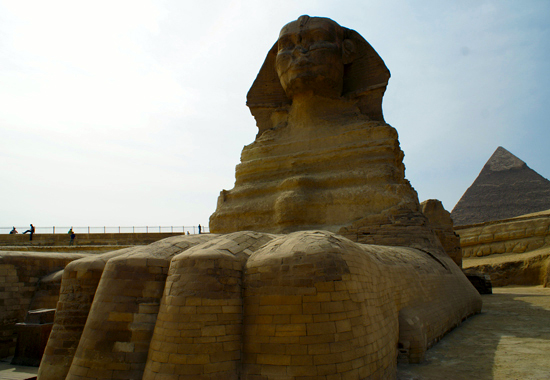
|
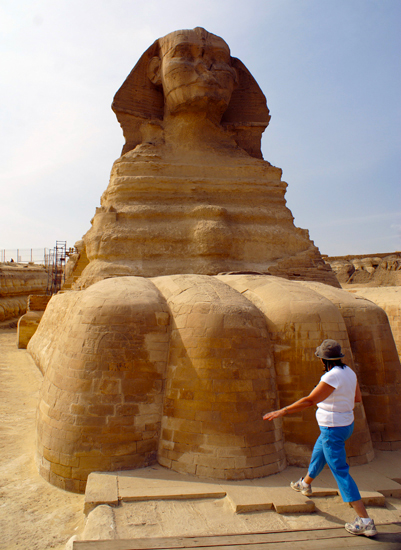
|
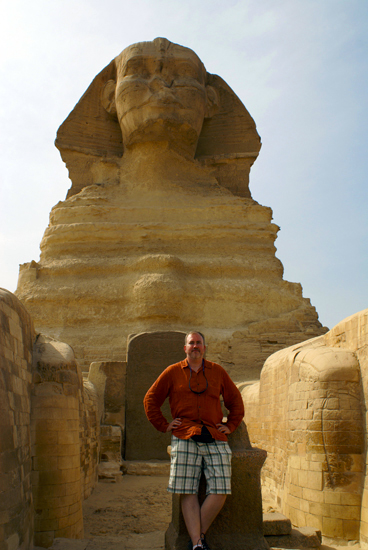 |
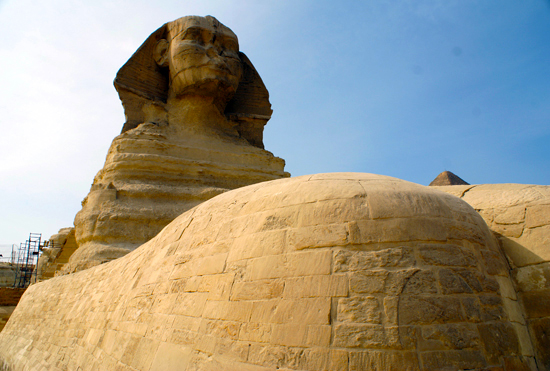
|
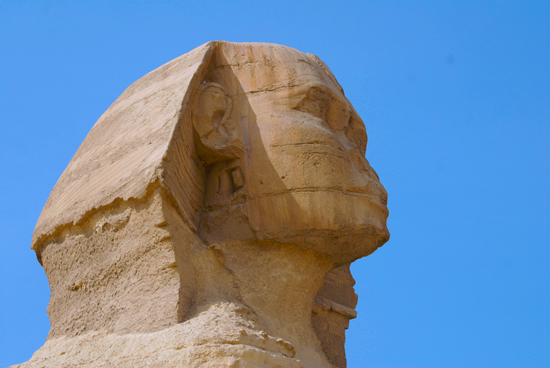 |
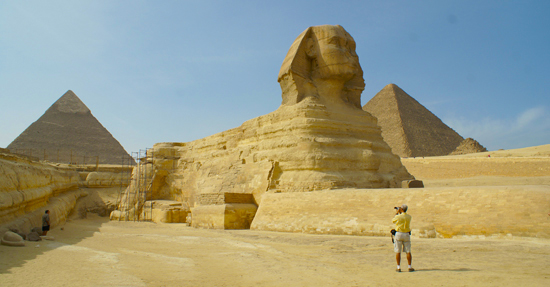
|
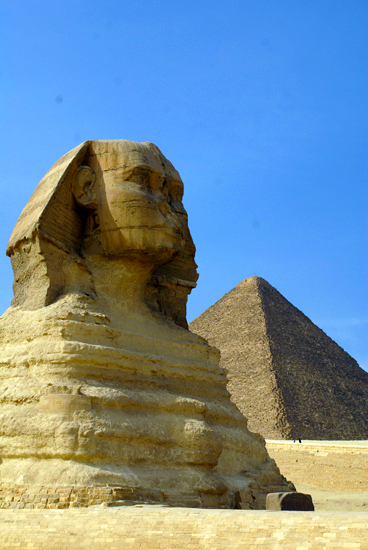 |
|
Because of our connection with National Geographic and the persistence of
our tour guide Aki, we were granted access into the enclosure around the
Sphinx, where most other tourists are barred from. |
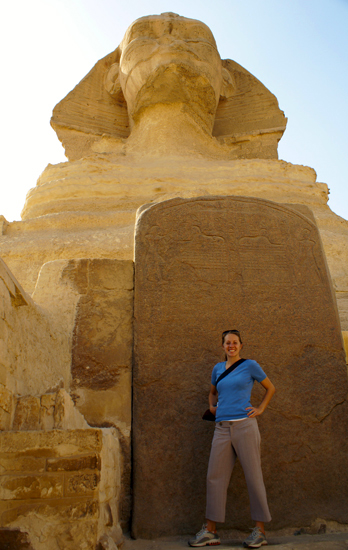
|
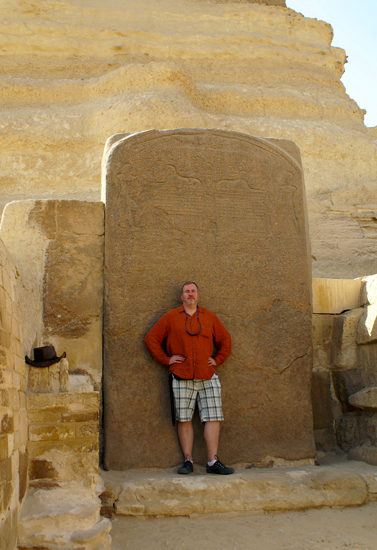
|
|
|
|
|
PREVIOUS |
HOME |
NEXT |
|
|
|